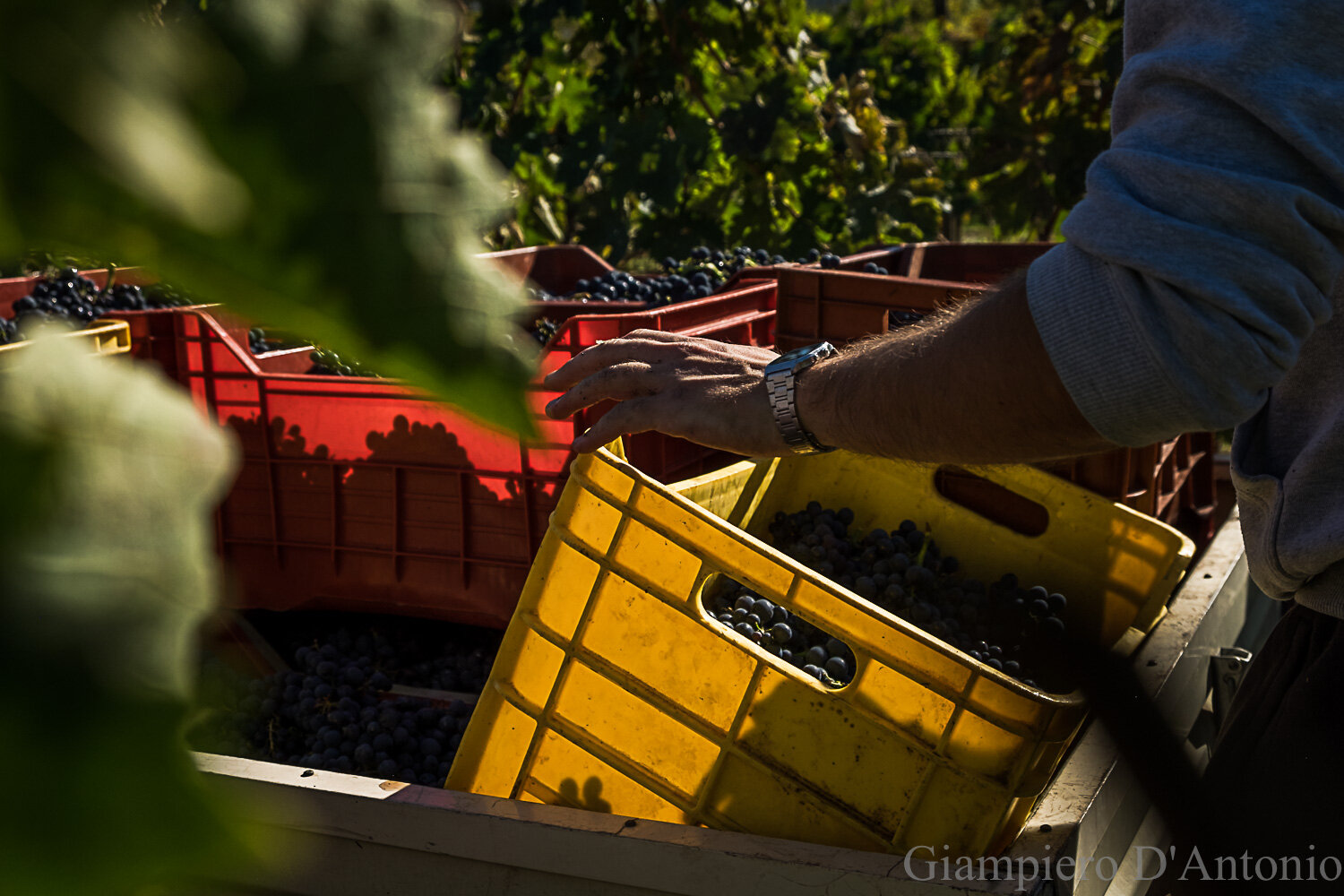The harvest is the moment in which the grapes, grown in the vineyard throughout the year, are harvested and taken to the cellar to begin the winemaking process, which with the alcoholic fermentation of the sugars contained in the ripe berries will transform the must into wine.
The harvest represents not only an annual event linked to work in the vineyard, but also a ritual inserted in agricultural traditions throughout Italy and has always brought with it a great charm and has both historical and anthropological value, inherent in social sharing and in the territory.
The historical and anthropological value of the harvest dates back to very ancient times and has been handed down from generation to generation through agricultural work methods and peasant traditions, as well as for the importance of its cultural and traditional aspects that distinguish the harvest as an annual work event and social sharing in the territory.
In many respects, the harvest still takes on a ritual moment today, has a rather strong social and communion meaning, in which men and women come together and work together for the same goal. The social and ritual role that characterizes the harvest was even stronger in recent decades, when friends, relatives and neighbors gathered in the vineyards, all working together in the vineyards and then celebrating with a rich banquet.
Here we are in the heart of Abruzzo, the green region of Europe, not far from Campo Imperatore, in a territory that has proved generous for the properties of the land and for the climate, which, working together, allow these vineyards, mostly Montepulciano, to produce a full-bodied and warm wine, just like the territory that hosts it.
Respect for nature, care for the territory, the use of only natural fertilizers, allows the vine to be cultivated in its habitat, with the spontaneous herbs that grow around it, with a developed biodiversity, the plant is thus able to produce fruit balanced that express all the typical characteristics of the territory in which it grows. The wine obtained, completely organic, is a healthy, natural and genuine product that respects not only the environment and the ecosystem but also protects the health of those who consume it, the producer himself and those around us, being devoid of any component chemical inside.
There are numerous difficulties encountered in cultivating an organic vine; difficulties that recur every day, especially when the critical years put the producers under pressure who, to protect the harvest, must use only natural products. This, however, always leads to improvement and to give the best every year to offer a wine that is 100% organic and healthy.
To naturally combat the diseases that can affect the vine, copper is the product that best adapts to this need, within the limits allowed by law. The vine is a plant that tolerates this natural component quite well but it is still a product that is dispersed in the soil.
After the grape harvest, we proceed with the pressing.
Once the peasants crushed grapes in tubs with bare feet.
Today it is carried out using machinery called '' destemmers '' which allow the elimination of the stalks before they pass through the rollers, reducing the risk of crushing them and releasing the bitter and astringent vegetable juice.
The must is then placed in large vats to ferment for about a week.
The fermenting must is left in contact with the skins and seeds that release the typically red color and tannins.
Finally, there will be the racking followed by aging which consists in decanting the wine, purified from the solid residues and the marc into the barrels, where a second fermentation and a further transformation of the residual sugar take place.
Those who, like us, are lucky enough to go and visit a vineyard, have the wonderful opportunity to grasp the enchantment of Nature that dominates and determines everything , an opportunity to witness one little special story made of simplicity and tradition.






























